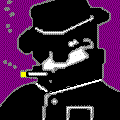



By the early 1980s it was believed to operate nine signals intelligence ground stations with an estimated staff of nearly 1,000. A circularly disposed antenna array (CDAA), the same model as the "elephant cage" that became famous at the communications office in Sobe in Okinawa, stands in Higashi Chitose in Hokkaido and another in Miho in Tottori Prefecture (they both belong to the GSDF). Chobetsu embarked on a major expansion in the early 1980s, and by the early 1990s operated a total of 18 or 19 ground stations with some 1,100 personnel.
While under the Joint Chiefs of Staff, the Chobetsu reported directly to the Cabinet Research Office. Although this "special intelligence unit" was organizationally attached to the GSDF, its chief had been successively assigned from the National Police Agency. Therefore, most of the collected information was reported directly to the Cabinet's Office of Intelligence. According to some accounts, Chobetsu is directed domestically at US installations and US companies in Japan, and at domestic Japanese companies.
The communications office in Tachiarai in Fukuoka Prefecture -- a detached force from the "special intelligence unit" on China-related information -- had the information on former Chinese Communist Party Vice Chairman Lin Biao's decision to defect aboard a Trident airplane and his subsequent demise due to the plane crash. Another success happened when the Korean Airlines' airplane was shot down. A detached force in Wakkanai from the special office of the second intelligence division of the GSDF's intelligence department, also known as the "special intelligence unit," was able to intercept and record the communications between the pilot of the Soviet fighter plane and the air strike control center in Sakhalin, capturing the first-rate classified information pertaining to the incident. Through voice analysis, it even identified the name of the pilot, proving that its daily accumulation of data was useful.
Japan's current intelligence system involves compiling, collating, analyzing, and evaluating data from satellites, radio transmissions, and telecommunications gathered from both US and Japanese sources. Japan is a signatory to the UK-USA intelligence sharing agreement, but only at the level of a �Third Party�, with substantial limitations on what information is shared and the timeliness of its delivery. And allthough Japan and the United States are bound by a defense alliance, this does not mean the United States is required to provide all of its reconnaissance information to Japan.This interaction with the US was illustrated when on 21 March 1998 the radio monitoring facility of the Self Defense Agency (SDA) in Tottori Prefecture detected an unidentified code transmitted from ships in the Sea of Japan. The activity of the two North Korean intelligence collection boats was detected by a US intelligence satellite. Based on this detection, an American EP-3 electronic intelligence aircraft identified the location of the two Morth Korean boats, and on 23 March Japanese SDA patrol planes found the two boats. The information from the US satellite was transmitted to DIA and CINCPAC. CINCPAC sent the information to the US base in Yokota City in Tokyo, and Japan's SDA Intelligence Office received it from the US base. The US Army Headquarter Office has three intelligence officers with liaison offices in SDA offices, and the SDA has counterpart officers at the US base in Yokota City.